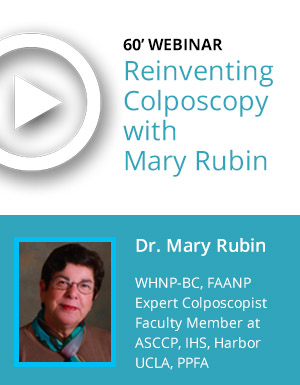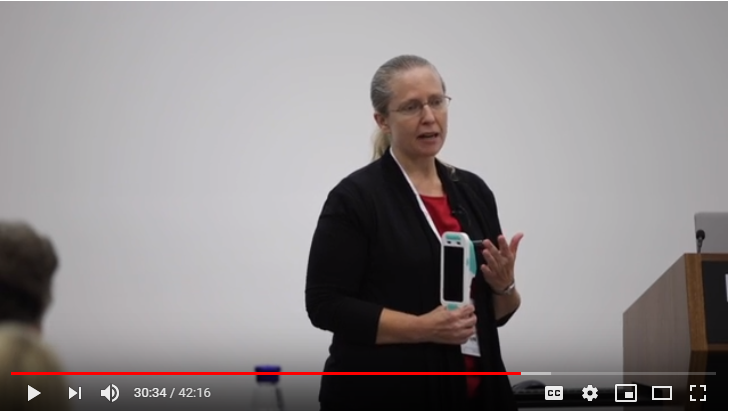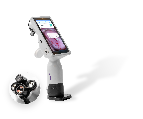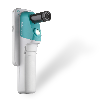Today if you attend one of the numerous ASCCP and other colposcopy training courses around the country, you will find that nurse practitioners make up many of attendees. More and more nurse practitioners perform colposcopy, a move that many NPs consider a natural progression of their professional capabilities.
How did nurse practitioners enter the field of advanced cervical cancer screening and what role will they play in the future?
The past fifty years have seen nurse practitioners define their place in the healthcare system. Today they perform a vital function, complementing the work of physicians, to bring patients a comprehensive healthcare experience. It is easy to forget that this position was hard won.
![]()
Development of nurse practitioner role
The role of the nurse practitioner first formed in 1965 with the first NP training program opening at the University of Colorado. This resulted from the expansion of Medicare and Medicaid in the same year which created a sudden lack of physicians to cover the increased demand. By 1973, the United States had 65 nurse practitioner programs throughout the country.
Mary Rubin, Ph.D. WHNP-BC, FAANP FACULTY, was an early nurse practitioner. “I was already exploring advanced nursing practice as the concept of NPs was just being formed. I was lucky to be working at the University of Pennsylvania, where there was an openness to NPs having a collaborative relationship with physicians,” she recounts.
Receiving official recognition was a protracted process. Congress awarded partial reimbursement for nurse practitioners in the 1989 Omnibus Reconciliation Act with full reimbursement only following in 1997 with the Balanced Budget Act.
“Some physicians felt adversarial towards nurse practitioners,” Dr. Rubin remembers. “We were pioneering the role both in terms of creating the necessary education to fit state regulations and winning the respect of the medical establishment.” The educational process for nurse practitioners has developed to include advanced degrees. Mary Rubin earned her Ph.D. as a Nurse Practitioner at the University of PA.
The support of forward-thinking physicians helped nurse practitioners achieve the necessary recognition. “For most of us in the very beginning, we each had a physician colleague who really believed in us. They fought for us,” Dr. Rubin said.
Nurse practitioners performing colposcopy
Dr. Rubin became one of the first nurse practitioners to perform colposcopy. “Many of the advances for nurse practitioners came about because we were able to fill a need,” she explains. For Dr. Rubin, the need was the DES crisis (where many girls were born with genital tract and cervical defects as a result of their mother’s taking diethylstilbestrol during pregnancy.) The University of Pennsylvania was a major center for DES treatment and study. “We needed more clinicians to perform colposcopy. There was such a volume of patients that training the advanced nursing staff was the obvious solution.” Dr. Rubin learned colposcopy from her physician colleagues.
Read more about DES and how it continues to affect women today>>
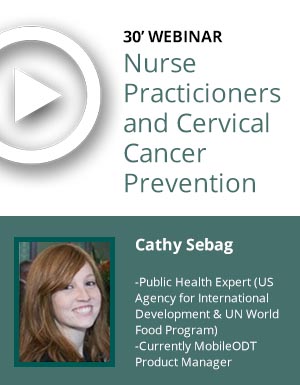 Even with the support of colleagues, receiving official recognition did not happen immediately. “I joined the ASCCP in 1972,” Dr. Rubin relates. “At first, nurse practitioners weren’t given full membership. We were associate members with no voting privileges.” The same colleagues who supported their initial colposcopy training and practice now supported Dr. Rubin and her fellow nurse colposcopists in receiving full member status of the ASCCP.
Even with the support of colleagues, receiving official recognition did not happen immediately. “I joined the ASCCP in 1972,” Dr. Rubin relates. “At first, nurse practitioners weren’t given full membership. We were associate members with no voting privileges.” The same colleagues who supported their initial colposcopy training and practice now supported Dr. Rubin and her fellow nurse colposcopists in receiving full member status of the ASCCP.
“It wasn’t long before we received full voting privileges. In the mid-70s, I was elected to be the first nurse practitioner on the ASCCP board of directors,” Dr. Rubin recalls. She held her position on the ASCCP board for a decade by which time the place of nurse practitioners within the colposcopy field was cemented.
“Today physicians appreciate nurse practitioners and the work we do. NPs have a different relationship with patients. While a physician might only have 10 mins for an exam, most NPs have about half an hour. This gives us more time to work on patient education,” Dr. Rubin explains.
The mutual benefit of nurse practitioners performing colposcopy
For several years, Bonnie Betts, NP, WHNP, was the head of nursing for FPA Women’s Health. Her duties included overseeing the training of nurse practitioners in colposcopy as a ASCCP certified mentor. “I think the biggest advantage that nurse practitioners offer is that they have the time to be more patient-focused instead of disease-focused. We have more time to talk to patients and get a holistic understanding of their experience.” This approach benefits both patients and physicians.
“By working together, nurse practitioners are able to complement the work of doctors to give a broader healthcare experience,” Betts comments.
Throughout the development of the nurse practitioner field, progress has occurred out of necessity. Betts acknowledges that NPs play an important role in extending healthcare provision. “NPs are frequently more accessible which means there is more availability of preventive medicine. There are many areas that lack adequate OBGYN coverage, and nurse practitioners are stepping into that gap, bringing care to women who otherwise would have gone without.”
10 million women lack OBGYN coverage. Read more about the OBGYN crisis in the USA>>
Telecolposcopy: the next step for nurse practitioners?
Just as Dr. Rubin pioneered the role of the nurse colposcopist in the 1970s, Betts worked with physicians in the FPA Women’s Health network to pioneer telecolposcopy. “Telecolposcopy means that a less experienced or training clinician is connected to an expert during the procedure via video link up. The expert is able to supervise the clinician and offer real time guidance on how best to perform the colposcopy,” Betts explained.
Dr. Rachel, MD, Medical Director at FPA Women’s Health, feels enthusiastic about the role nurse practitioners can play in colposcopy. “Nurse practitioners are an essential part of our patient experience. In many cases, they are the frontline, screening patients before they see a physician. Physician time is limited and our staff of dedicated NPs enable us to extend the services we can offer.”
The telecolposcopy program has allowed FPA Women’s Health to fully utilize their nursing staff and expert physicians. Dr. Rachel outlined, “At FPA we have 23 clinics spread around California. Before we started the telecolposcopy program, many patients had to travel to another clinic where a trained colposcopist was available. Even if we wanted to train more clinicians to perform colposcopy, it was hard for them to travel to fulfill the necessary supervised procedures.”
Today FPA Women’s Health is using the EVA System digital colposcope to facilitate their telecolpscopy program. NPs who have complete the initial ASCCP training are mentored via video link up using the EVA System. “Having nurse practitioners perform remote colposcopy has significantly increased the services we are able to offer,” Dr. Rachel explained.
Learn more about telecolposcopy at FPA Women’s Health>>
The future of nurse practitioners in colposcopy practice
In 2008, Dr. Rubin received the ASCCP Lifetime Achievement Award for her contribution to the field, marking the full acceptance of the role that nurse practitioners play in colposcopy. Dr. Rubin comments, “Things don’t happen unless you make them happen. We need equity of access to care. A woman in a trailer park should have the same access to healthcare as a woman living on Park Avenue. Nurse practitioners can help to extend access to care and then everybody wins.”
Nurse practitioner looking to enter the colposcopy field receive full and thorough training. Both Dr. Rubin and Bonnie Betts encourage nurse practitioners looking to train in colposcopy to first become fully accustomed to their advanced role as an NP. “It is important to first experience basic nursing,” Dr. Rubin advised. “I suggest that nurses work for 2 years before I would accept them into my colposcopy training program.” Betts agrees, “Hands-on skills and experience help you develop the problem-solving skills you need to provide excellent patient care.”
Just as the nurse practitioner role was once pioneering, so nurse practitioners themselves have the opportunity to be pioneers. Betts suggests, “Nurse practitioners can be advocates for new technologies. I am passionate about colposcopy so I am passionate about the technology we use. Medical advances are always happening. It is exciting to be part of that change.”
